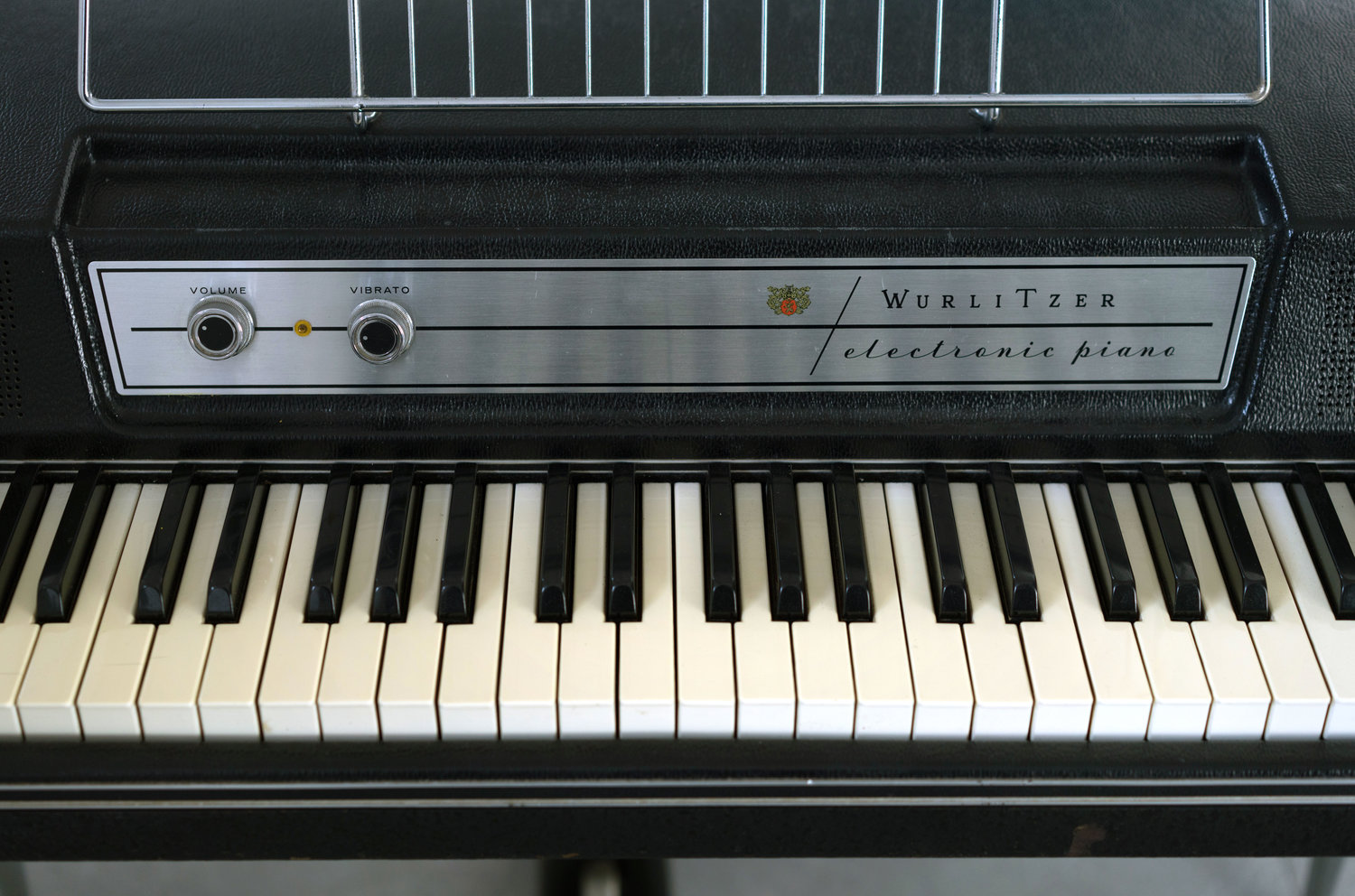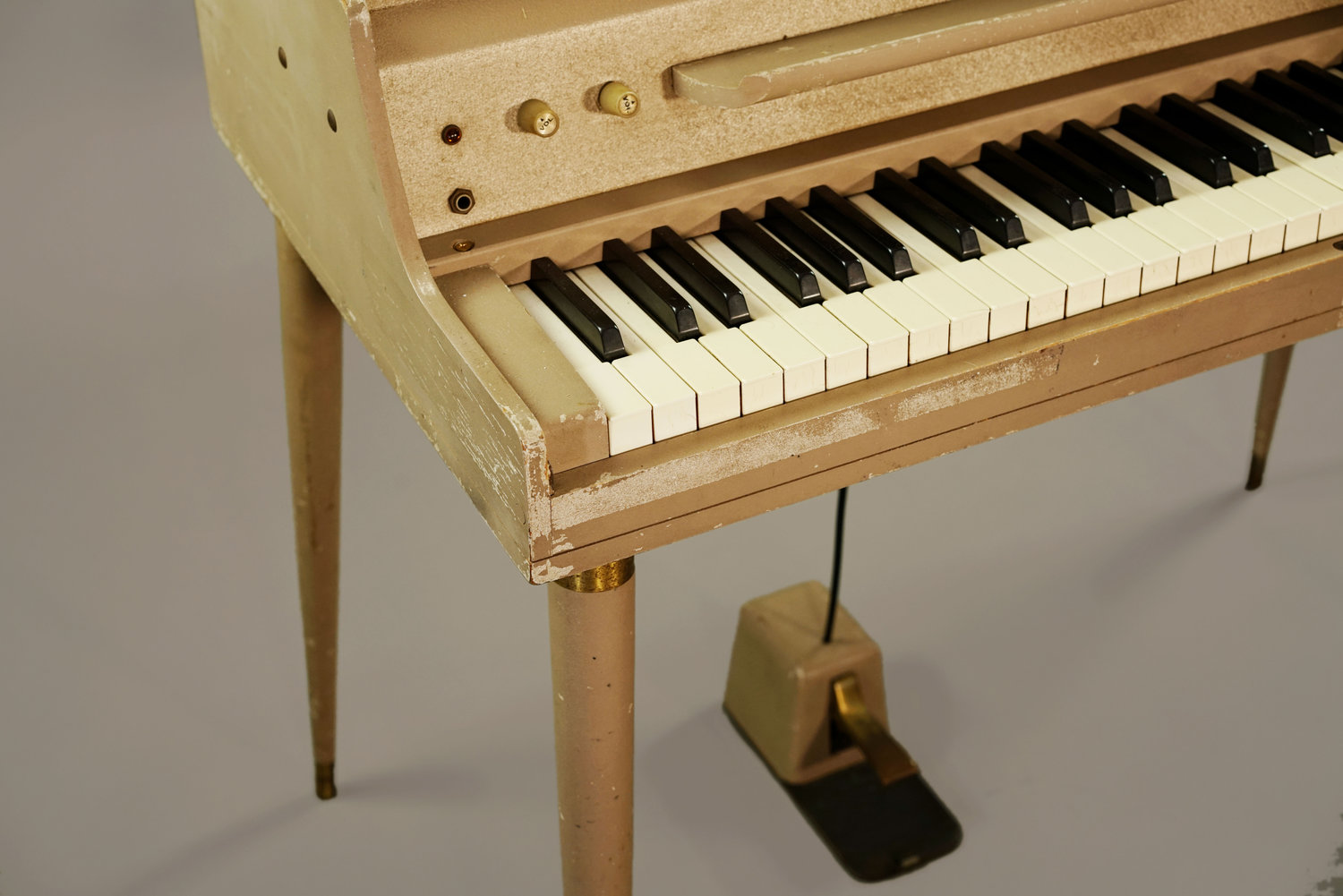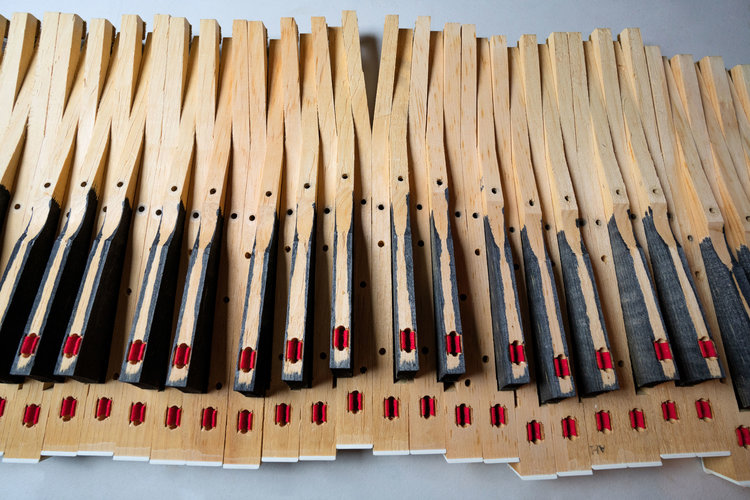Easy Fixes for Malfunctioning Wurlitzers
Some issues involving a vintage Wurlitzer electronic piano are complex to resolve. Others are caused by loose hardware, disconnected wires, or pieces of debris. If you’d like to try some easy fixes before you call a tech, here are some steps that you can take.
Make sure that your Wurlitzer is turned off. Unplug the power cord.
If you have a Wurlitzer 200a or other 200-series model, remove the hum shield (if present).
Inspect all screws across the action assembly and make sure that they are firmly screwed in. Loose screws can cause rattling and general poor performance.
Does the keyboard look dusty? Small pieces of debris can short the reed to the pickup and cause loud popping sounds. In extreme cases, the Wurlitzer may not pass any audio. Gently clean the pickup with a soft brush or carefully spray it with canned air.
Without touching the amp or removing it from the chassis, visually inspect any exposed wiring. If you need to move wires aside, use a nonconductive wooden chopstick (not a pencil: graphite is conductive). Check if any wires are broken or obviously disconnected. If you do see broken wires, and you’re not sure how to re-connect them, that’s okay: this is still useful information for a tech. However, some of the wires, including green ground wires, are supposed to be connected to the chassis with a screw. If these are loose or the screw is missing, you can tighten them or otherwise put them back into place.
Wurlitzer 200 and related models have an amplifier mounted in front of the mechanical assembly. You can visually inspect the amp to determine if any wires are disconnected. Make sure that the input and speakers are connected to the appropriate places on the circuit board. Note if you see any wires dangling or hanging in midair.
The Wurlitzer 200a and related models also have an amplifier mounted in the front, but the circuit board is split into a preamp and power amp sections. The preamp is mounted on the top of the reed bar, while the rest of the circuit board is mounted on the amp rail. Visually examine the amplifier as described in the previous bullet point, but also check if the preamp is firmly connected to the power amp.
The Wurlitzer 140b and earlier models have an amplifier that is mounted in the back. The chassis is screwed in place and any repair that involves removing it is outside the scope of this article. However, you should double-check that the wiring harness, speaker, and input are firmly plugged in. If the Wurlitzer is a tube model, make sure that all tubes are present.
Note that all Wurlitzer models have a high-voltage power supply, and that capacitors across the amp can carry a charge even when the keyboard is turned off and unplugged. Do not attempt to repair or modify the amplifier without taking the appropriate safety precautions.
Further Reading
Browse all of our articles on restoring vintage gear. Or, click on an image below.





